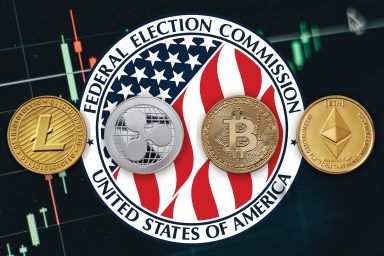Evolving thoughts on the crypto revolution.
I am currently rethinking my views on cryptocurrencies and what they portend for the future. Like many people, I missed easy opportunities to invest in cryptocurrencies years ago — even small amounts put in Bitcoin or Ethereum back then would have yielded fantastic returns by now. But I never pursued financial gain for its own sake. This is due to an innate idealism and communitarianism that, even now, I don’t entirely regret.
In fact, I worry that crypto accelerates our trajectory toward a world dominated by economic relations above all other concerns. Many people I know who start to invest in crypto spend a huge amount of their time and energy focused on it. This activity is highly abstract and compulsive. It hardly differs from currency speculation or day-trading. Crypto remains hyper-volatile, so making good returns on it requires tremendous vigilance and rapid response.
I feel the need to reach a meta-level understanding of what’s happening with crypto. My current view is that it is a fascinating, ambiguous, hopeful, and dangerous phenomenon. I understand why Hillary Clinton is concerned, as she recently told Bloomberg News, that crypto threatens to undermine the legitimacy of national governments. I also keep asking myself where all this new crypto-wealth is coming from, since crypto, in itself, does not create anything of tangible value, such as food or energy.
In general, the rich continue to get richer (particularly the super-rich) while the poor keep getting poorer. Crypto doesn’t seem to counter, but rather it exacerbates this trend, while creating a small number of new wealth holders. In that sense, the crypto revolution seems primarily to be another mechanism through which mostly male, mostly white, mostly engineering-oriented elites increase their economic control over the rest of the world through financial sorcery. I find it interesting that psychedelics, shamanism, and altered states of consciousness are being associated with cryptocurrencies — as if psychedelic mysticism provides a needed ideological support for this magical new form of money that seems to come from nowhere. Similarly, the traditional institutions of banking were generally designed to look like Greek or Roman temples, often with columns and friezes, to make an association between money and the long-term stability of the Classical world.

Symbolic architecture: The imposing fortress-like edifice of the Federal Reserve, which is neither federal nor a reserve. Photo credit: AgnosticPreachersKid / Wikimedia (CC BY-SA 3.0)
When someone buys Bitcoin, what are they actually buying? They are buying rights to a particular expression of a mathematical code. But Bitcoin is open-source, and anyone with the technical knowledge can “fork” Bitcoin and run a new copy of the original source code (as has happened with Bitcoin Cash and other forks). On some level, then, the only reason that Bitcoin holds its value is due to social trust. A group of people agreed that this particular iteration of the Bitcoin blockchain has value. They convinced others to join them in their faith. Doesn’t this make Bitcoin inherently a Ponzi Scheme, since, if faith evaporates and new people stop participating, the value dissolves? In other words, it is still possible that Bitcoin might become worthless.
The Bitcoin faithful would answer this by noting that fiat currency is no different: It is also a social agreement, or a social relation, in the end. While this is true, a national currency is “backed” by all of the institutions of that country — its infrastructure, roads, education system, military, as well as its legal code and historical gravitas. This seems to hold much greater significance than ascribing value to a blockchain whose source code is, in theory, infinitely replicable. However, the financial elite manipulate money creation for their own benefit. This is something you can’t do with Bitcoin, which is designed so that only 21 million Bitcoins can ever be mined (I believe they are past 18 million now).
The Gini Coefficient measures the distribution of wealth across populations in different countries. The Gini Coefficient of Bitcoin, along with other major cryptocurrencies, is far worse than that of highly unequal countries such as North Korea. The “early adopters” possess far more of the asset than will ever be available later. These early adopters have a tremendous vested interest in convincing everyone else that their particular speculative asset actually has worth. This is particularly important because Bitcoin is not useful as a medium of exchange. You can’t do much with it, so it is marketed as “digital gold.”
When I wrote How Soon Is Now, I felt hopeful about the potential of blockchain technology — particularly Ethereum, the decentralized “world computer” which continues to have scaling issues — to help us build systemic design solutions to our ecological and geopolitical crisis. Different blockchains can function simultaneously as currencies (or stores of value) as well as internal governance systems. These governance systems can be defined in any way, according to the contracts programmed into the code.
In theory, you could design a blockchain-based currency that accrues value through ecologically and socially regenerative activity, or a currency that cannot be owned by any individual but continuously circulates among communities. You could do pretty much anything imaginable with the underlying transparent ledger technology. But even if you built a blockchain-based, ecological regenerative community currency that might save the world, you would then have to figure out how to get other people to buy in to it. So far, the only motivation strong enough to get people to adopt a new technology or cryptocurrency at a large scale is perceived self-interest.
The integration of currency — value exchange and value storage — and governance in different blockchains makes clear what we see in our world in practice: Political and economic systems are never independent from each other. Together they make up one political-economic system. For example, the US government and military are deeply interwoven with the fossil fuel industry, which built the world’s largest infrastructure over the last two centuries. The US dollar maintains its status as the global reserve currency because it is used as the “petrol dollar,” exchanged for fuel across the Middle East. This is also why we can’t stop drilling, fracking, and pipelining.
The current way that corporations and financial systems like central banks operate meshes with our current form of government. Representational systems of government give “the people” a degree of influence over the direction of policies via elections. But these governments were consciously designed to protect the interests of a wealthy and privileged elite. Power-players from Zbigniew Brzezinski to Edgar Bernays all the way back to James Madison and Alexander Hamilton have made this clear. “Real liberty is neither found in despotism or the extremes of democracy, but in moderate governments,” Hamilton wrote.
Blockchain-based currencies and governance models hold out the promise of fully traceable, accountable, and transparent systems that, in theory, cannot be manipulated by a small elite group with the ability to do things like control the monetary supply (how this works out in actual practice is another story). The way our government handled the 2008 financial crisis, for instance, served the opaque interests of the financial elite who continued to receive massive bonuses even when they were directly responsible for fraudulent and deceptive practices that devastated the economy, costing three million people their homes. Our government was incapable of holding these financial institutions accountable, and lost the public’s trust as a result. This erosion of trust contributed to Donald Trump’s upset victory, and the still looming prospect of fascism. The initial white paper for Bitcoin — released in 2008, that same year — proposed a decentralized alternative to national currencies issued by central banks.

Bitcoin mining operations require tremendous amounts of energy as well as the raw materials needed to build the rigs. Photo credit: Marko Ahtisaari / Flickr (CC BY 2.0)
Because crypto is moving so fast, it is difficult to find relevant sources of unbiased information. Tim Ferris is useful because his West Coast celebrity status gives him relatively unfettered access to many of the power players in the field. He conducts in-depth interviews with many of them on his podcast, so we can hear what they think.
In a recent interview with Ferris, Coinbase CTO and investor Balaji Srinivasan made a number of fascinating points related to crypto and society more broadly, some of which I agree with vehemently and some that I disagree with, with equal vehemence. He spoke dismissively of “legacy systems” including the East Coast media establishment and Wall Street as being elite clubs ruled by nepotism, compared to the merit-based world of disruptive tech startups. He argued that all legacy-based nepotistic systems would eventually melt down as trustless, decentralized tech takes over.
Srinivasan essentially argues for the crypto libertarian perspective which is very influential in Silicon Valley (he was up for a role in Trump’s administration). This perspective — descended from economists like Friedrich Hayek and Murray Rothbard — needs to be understood and unpacked. In “The Politics of Bitcoin: Software as Right-Wing Extremism” (2013), David Golumbia reveals “how much of the economic and political thought on which Bitcoin is based emerges directly from ideas that travel the gamut from the sometimes-extreme Chicago School economics of Milton Friedman to the explicit extremism of Federal Reserve conspiracy theorists. While it is beyond doubt that many who ‘believe’ in Bitcoin think they do not subscribe to these theories, it frequently turns out that they rely on assumptions and concepts that do emerge from the far right. As they are currently configured, Bitcoin and the blockchain technology on which it rests satisfy needs that make sense only in the context of right-wing politics; those of us who do not share those politics must, therefore, view Bitcoin and the blockchain with both skepticism and a clear eye for the political terms and concepts invoked in the discourse surrounding them.”
The leading cryptocurrencies, right now, are pointing us in the direction of an anarcho-capitalist society where government is reduced in function while “free markets” determine our destiny (the proposals put forth in the book Radical Markets, endorsed by Ethereum founder Vitalik Buterin, take this to an extreme). I agree that nation-state governments seem out-of-date in various respects. But they also perform many crucial functions and give the people some level of influence, provide social services, and offer other protections. The distinctions between autocracies and open societies remain real ones. It is unfortunate that our society is currently experimenting with new forms of online censorship. However, this is still a far cry from China, where the government intensifies totalitarian controls.
Unbundling and Rebundling
Srinivasan talks about “unbundling” as a crucial first factor in profiting off tech innovation, followed, eventually, by “rebundling.” What happens when industries get unbundled by technology is a lot of disruption and large-scale loss of jobs. There are a few big winners and many small losers. Previously decently paying occupations become automated or turn into temporary work-for-hire gigs. This has been the case with journalism and media, for instance, a field I know somewhat better than others. But it is true in many arenas.
When it comes to media, the consequences of unbundling are both positive and negative. The shift is still ongoing and incomplete. Most probably, the negative consequences outweigh the positive ones, at least until now. This includes, nationwide, the closing of local newspapers and other journals. Their traditional revenue model collapsed due to Facebook and Google advertising. The disappearance of local journalism leads to an atrophy of understanding and community connection — a void that extremist movements rush to fill. Consequences of media “unbundling” also include the proliferation of “fake news,” with the increasing polarization of the US population due to the filter-bubble effect.
In the media industry, “unbundling” leads to fragmentation and balkanization. Many individual writers/journalists with followings left publications to do what I am doing here: produce their own content on their own track, for their own audience. Content creators gain freedom and flexibility, while losing the cultural authority that comes from working for established platforms.
As Srinivasan notes, there is a cultural shift in preferred formats, from investigative pieces that are often slanted according to institutional bias to long podcast interviews. This shift is positive in some ways, as subjects get to speak for themselves rather than undergoing journalistic distortions. But it also eliminates the kind of deep-dive into a subject’s background that investigative journalism can accomplish.
We lose something without magazines, networks, and other shared contexts which showcase a chorus of voices who refract and reframe their subject matter in different ways, defining a cultural consensus. Also, long-form journalism — the kind of in-depth investigative reporting that led to Truman Capote’s In Cold Blood, Joan Didion’s The White Album, John McPhee’s work, or many classics of the last half-century — mostly doesn’t get produced anymore, as it lacks a funding mechanism. Generally, across the media, there are many more voices but less cohesion, more fragmentation. There are innumerable points of view, but no depth-of-field perspective able to integrate them.
I could go into much greater depth on the impacts of digital technology and the internet on media and journalism. What the ongoing cryptocurrency revolution reveals is that a similar process — of unbundling and disintermediation — is happening when it comes to money itself. Since political and economic systems aren’t really separate, it is highly likely this will impact all of our legacy institutions, from banks to companies to national governments, in ways we will find difficult to fully anticipate as of yet. I will explore this in future essays.
What is happening to the media can be seen as foreshadowing in some ways. The media shapes our capacity to think and share information, but money is a more immediate life-or-death issue, since, without it, you quickly starve.
A version of this piece was originally published in “Daniel Pinchbeck’s Newsletter.”



